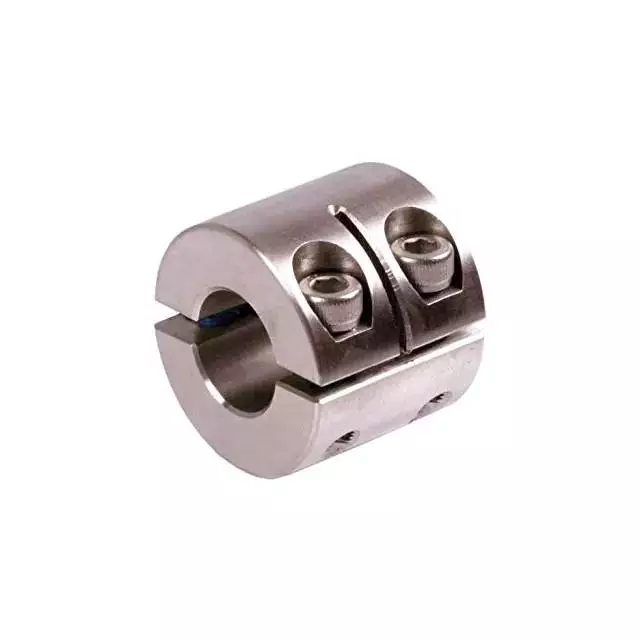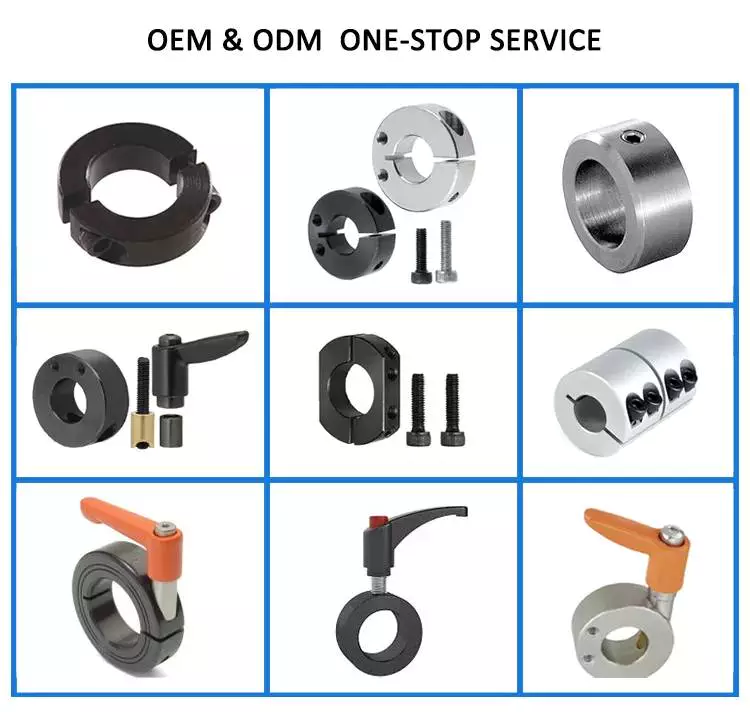
Are there educational resources on troubleshooting common issues with shaft collars?
Yes, there are educational resources available that provide guidance on troubleshooting common issues with shaft collars. Shaft collars, like any mechanical component, can experience various challenges during installation, operation, or maintenance. Understanding common issues and knowing how to address them can help ensure proper functionality and performance. Here are some sources where you can find educational resources on troubleshooting common issues with shaft collars:
- Manufacturer Websites: Many shaft collar manufacturers provide technical resources and troubleshooting guides on their websites. These resources often cover common issues encountered with shaft collars, such as misalignment, slippage, or excessive wear. They offer insights into the causes of these issues and provide step-by-step instructions or recommendations for troubleshooting and resolving them.
- Online Forums and Discussion Boards: Online forums and discussion boards dedicated to mechanical engineering, industrial maintenance, or related topics can be valuable sources of troubleshooting information. These platforms often have dedicated threads or sections where users share their experiences and solutions for common shaft collar issues. Participating in these discussions or searching through relevant threads can provide practical insights and problem-solving approaches.
- Engineering Publications and Journals: Engineering publications and journals may feature articles or case studies that discuss troubleshooting techniques for mechanical components, including shaft collars. These resources often provide in-depth analysis, experimental data, and expert insights on identifying and resolving common issues. Accessing academic databases, visiting university libraries, or subscribing to relevant publications can help you access these educational resources.
- Professional Training Courses: Professional training courses or workshops related to mechanical engineering, industrial maintenance, or machinery operation may include modules or sessions on troubleshooting mechanical components. These courses are designed to provide hands-on training and practical knowledge on identifying, diagnosing, and resolving common issues. Industry associations, technical training institutes, or equipment manufacturers often offer such training programs.
- Online Video Tutorials and Webinars: Online video tutorials and webinars hosted by industry experts or equipment manufacturers can be valuable resources for learning about troubleshooting common issues with shaft collars. These resources often provide visual demonstrations, real-life examples, and practical tips for diagnosing and resolving problems. They can be accessed through manufacturer websites, online learning platforms, or industry-specific websites.
By utilizing these educational resources, you can enhance your knowledge and skills in troubleshooting common issues with shaft collars. It is important to remember that specific troubleshooting approaches may vary depending on the type of issue, collar material, and application. Always refer to the manufacturer’s guidelines and consult with experts or professionals when dealing with complex or critical situations.

Where can I find information on the materials used in manufacturing shaft collars?
If you are looking for information on the materials used in manufacturing shaft collars, there are several sources where you can find relevant information. Here are some common resources to consider:
- Manufacturer Websites: Many manufacturers of shaft collars provide detailed information about the materials they use in their product specifications or technical datasheets. Visiting the websites of specific collar manufacturers and exploring their product documentation or resources section can help you find information about the materials used in their collars. This information may include the type of material (such as steel, stainless steel, aluminum, or plastic) and any specific properties or characteristics associated with the material.
- Product Catalogs and Brochures: Manufacturers often publish product catalogs or brochures that provide an overview of their collar offerings. These catalogs may include information about the materials used in manufacturing the collars. You can request catalogs from manufacturers directly or check their websites for downloadable versions. The catalogs may highlight the material properties and advantages of using specific materials for different applications.
- Material Databases: Online material databases or directories can be valuable resources for finding information about specific materials used in manufacturing shaft collars. These databases typically provide comprehensive information about various materials, including their composition, mechanical properties, corrosion resistance, temperature tolerance, and other relevant characteristics. Examples of such databases include MatWeb, Engineering Toolbox, or specialized materials databases maintained by industry organizations or universities.
- Technical Standards and Specifications: Technical standards and specifications related to mechanical components can often include information about the materials used in their construction. Standards organizations or industry associations may release documents that outline the material requirements for shaft collars or provide guidelines for material selection. Accessing these standards or specifications can provide insights into the recommended materials for shaft collar manufacturing.
- Consulting with Manufacturers or Suppliers: If you have specific questions about the materials used in manufacturing shaft collars, reaching out directly to manufacturers or suppliers can be beneficial. They can provide detailed information about the materials they use, including their composition, properties, and any specific treatments or coatings applied to enhance performance. Contacting manufacturers or suppliers allows for direct communication and the opportunity to address any specific concerns or requirements you may have.
When seeking information on materials used in shaft collar manufacturing, it is important to consider factors such as desired properties (e.g., strength, corrosion resistance), environmental compatibility, and application-specific requirements. This will help you make informed decisions about selecting shaft collars that are suitable for your specific needs and operating conditions.

What are the different types of shaft collars available in the market?
In the market, there are various types of shaft collars available, each designed to meet specific application requirements. Here are some commonly used types of shaft collars:
- Set Screw Shaft Collars: Set screw shaft collars are the most common type and feature one or more set screws that tighten against the shaft to secure the collar in place. These collars have a simple design and are available in various materials such as steel, stainless steel, or aluminum. Set screw collars are easy to install and provide a reliable grip on the shaft.
- Clamping Shaft Collars: Clamping shaft collars use a clamping mechanism, such as a split design with two halves and bolts, to tighten around the shaft. They provide a strong and secure grip and are often used in applications where frequent adjustments or repositioning of the collar is required. Clamping collars are available in different materials and can provide excellent holding power.
- One-Piece Solid Shaft Collars: One-piece solid shaft collars are made from a single piece of material, typically metal, and have no moving parts. They are simple in design and provide a lightweight and compact solution for applications where space is limited. These collars are often used in light-duty applications or as a stop or spacer on a shaft.
- Two-Piece Split Shaft Collars: Two-piece split shaft collars consist of two halves that can be assembled and tightened around the shaft using screws or bolts. This design allows for easy installation and removal without the need to slide the collar along the shaft. Two-piece split collars are commonly used in applications where the shaft cannot be easily disassembled or where frequent adjustments are required.
- Threaded Shaft Collars: Threaded shaft collars have internal threads that allow them to be screwed onto a shaft. They provide a secure and adjustable grip when tightened against the shaft. Threaded collars are often used in applications where precise positioning or fine adjustment is needed.
- Hinged Shaft Collars: Hinged shaft collars feature a hinge mechanism that allows for easy installation and removal without completely disassembling the collar. They are often used in applications where frequent access to the shaft is required or when the collar needs to be quickly repositioned or replaced.
- Flanged Shaft Collars: Flanged shaft collars have an extended flange on one side, which provides additional support and acts as a stopping point for other components. The flange helps prevent axial movement of the collar and provides a reference surface for locating or positioning other elements, such as bearings, gears, or pulleys.
- Specialty Shaft Collars: In addition to the standard types mentioned above, there are specialized shaft collars designed for specific applications. These include torque-limiting collars, indexing collars, quick-release collars, and shaft collars with integrated components such as gears or pulleys. These specialty collars cater to specific needs and offer unique features to enhance functionality or simplify assembly.
The choice of shaft collar type depends on factors such as the application requirements, shaft size, load capacity, ease of installation, and adjustability. It’s important to select the appropriate type of shaft collar that best suits your specific application to ensure proper functionality and secure shaft positioning within the mechanical system.


editor by CX 2024-04-17